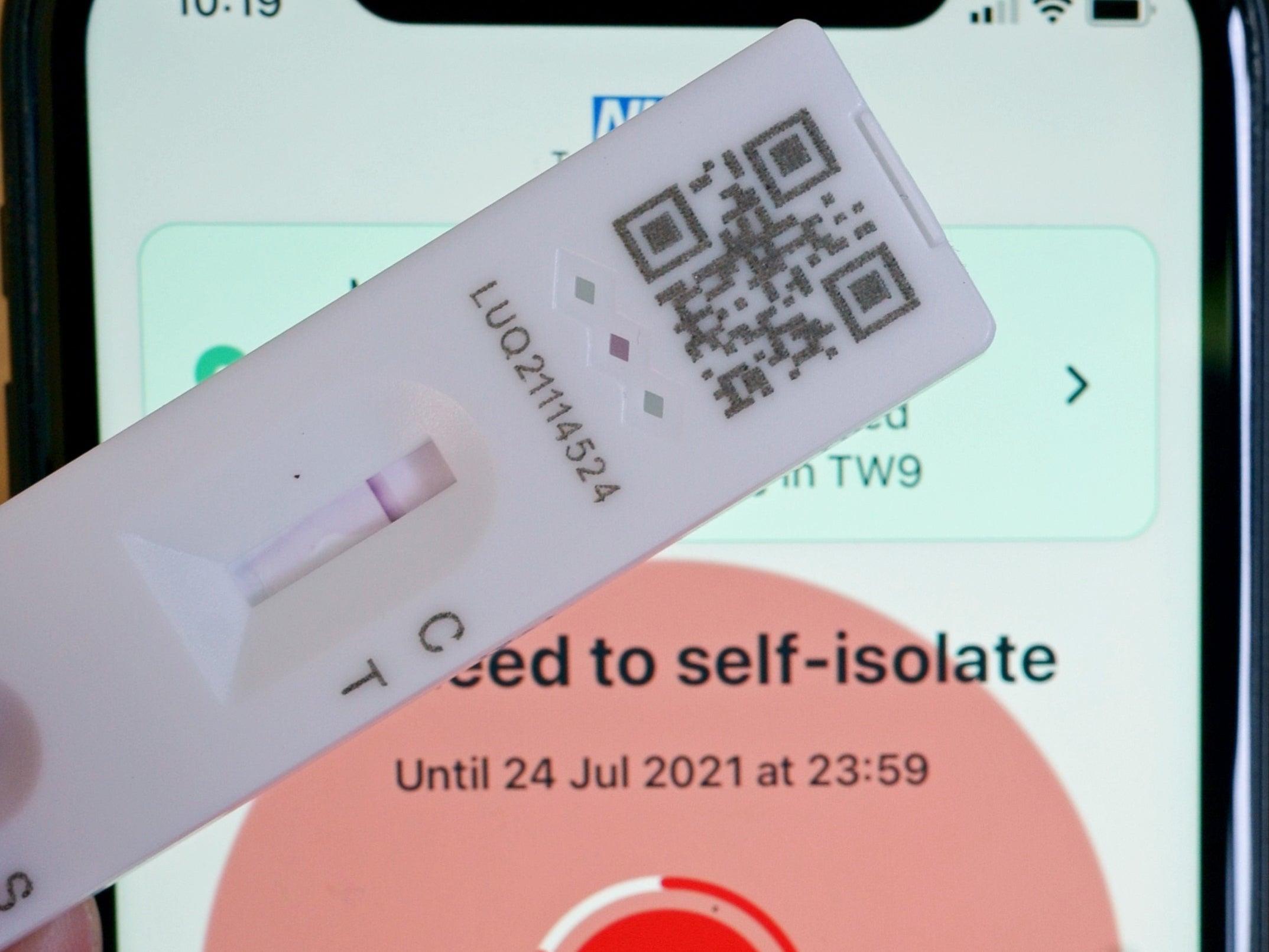Analysis: Is the new US five-day Covid isolation rule less safe than in UK?
One top scientist suggests the US decision to cut isolation without tests is “dangerous”

Your support helps us to tell the story
From reproductive rights to climate change to Big Tech, The Independent is on the ground when the story is developing. Whether it's investigating the financials of Elon Musk's pro-Trump PAC or producing our latest documentary, 'The A Word', which shines a light on the American women fighting for reproductive rights, we know how important it is to parse out the facts from the messaging.
At such a critical moment in US history, we need reporters on the ground. Your donation allows us to keep sending journalists to speak to both sides of the story.
The Independent is trusted by Americans across the entire political spectrum. And unlike many other quality news outlets, we choose not to lock Americans out of our reporting and analysis with paywalls. We believe quality journalism should be available to everyone, paid for by those who can afford it.
Your support makes all the difference.The United States has changed Covid isolation rules to allow patients who are asymptomatic out of isolation after five days, while wearing masks for a further five days.
In making the change, the Centers for Disease Control and Prevention – the equivalent of the UK Health Security Agency – appears to be treading the line between addressing “acute labour shortages” by releasing people earlier with the risk they could still be infecting others.
It comes after the UKHSA cut the mandatory Covid-19 isolation period from 10 to seven days, if people test negative on day five and day six.
The US decision has been criticised by many scientists including former Harvard epidemiologist Professor Michael Mina, who pointed out that the Omicron variant was causing positive tests for longer periods.
Irene Petersen, professor of Epidemiology and Health Informatics at University College London, said that, at the start of the pandemic, studies suggested SARS-CoV-2 viral load in the upper respiratory tract appeared to peak in the first week of illness, however this varied from person to person.
She said: “My understanding is the UKHSA has evaluated this and found seven-day isolation period alongside two negative lateral flow test results has nearly the same protective effect as a 10-day isolation period without lateral flow testing for people with Covid.
“By having the double testing, you have in the UK, you are improving the overall sensitivity. This is also what you call serial testing. This way we increase the sensitivity and decrease the chance of false negative results.”
She said the difference between the UKHSA ruling and the CDC scheme is the absence of double testing at the end of isolation, which she suggested was a “dangerous decision” as a much higher proportion of patients would still be infectious after five days.
However, decisions to reduce isolation are likely to be driven by the need to allow populations to get back to work – an important consideration when thousands of NHS and care workers are being forced to isolate at home.
In Britain, the number of staff absent due to Covid has become a significant problem for hospitals, with up to 12 per cent of staff off as of last week.
Billy Quilty, infectious disease epidemiologist for the London School of Hygiene and Tropical Medicine, said it could be worth considering a trade-off between what is feasible in terms of testing capacity and what is necessary to address an “acute labour crisis” that “may carry greater societal harms.”
He told The Independent that the CDC decision was probably based on evidence from infected patients swabbed everyday that the period of time in which a live virus can be detected is “relatively” short”.
“After this point, people are less likely to be infectious, especially for those without symptoms who shed virus for a shorter period of time than symptomatic individuals,” he said.
“When someone begins a period of isolation after developing symptoms or testing positive, they’re usually a few days into their infectious period already, so the risk of transmission is low after an additional five days in isolation.”
“When we modelled requiring someone to test negative by lateral flow tests for one or more days to allow for release from isolation, we found this transmission risk to be reduced to almost nil. This is an option for countries with accessible testing such as the UK.”
He added: “Epidemiologists will be keeping a keen eye on the data as it emerges to ensure that these policies will continue to be effective for Omicron.”
Join our commenting forum
Join thought-provoking conversations, follow other Independent readers and see their replies
Comments